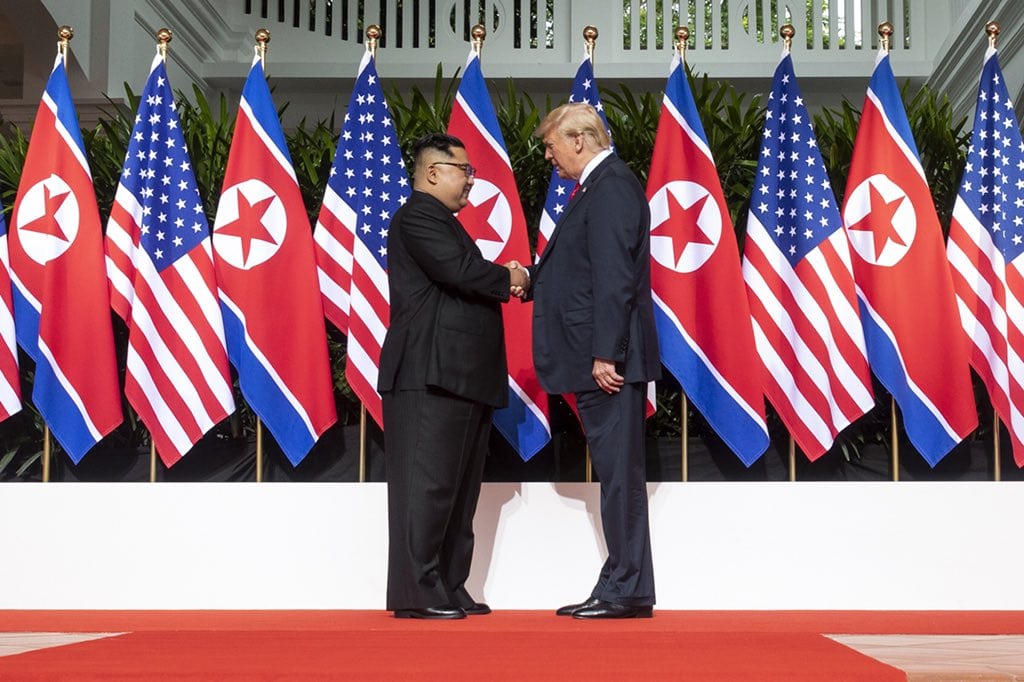 White House Photo
White House Photo
Before the Second Trump-Kim Summit: A Look Back
As Trump and Kim will hold their second summit next month, now is a good time to pause and recap the events of the last thirteen months leading up to this point. 2018 began with North and South Korea marching and competing as one in the Winter Olympics and ended with both Moon and Kim expressing optimism about the future of bilateral relations. In between there were many shocking twists and turns from Moon and Kim’s embrace at the DMZ to Trump’s declaration of love for Kim.
North Korea and South Korea
North and South Korea began 2019 with bilateral relations in a much better shape than they were at the end of 2017. During the past thirteen months tensions have been dramatically reduced between the two nations. Kim and Moon met three times last year once in Pyongyang (a first for a South Korean leader) and twice at the DMZ. Following the third summit both sides signed a military agreement meant to reduce the chance of conflict at the DMZ. The agreement limited the areas in which each side’s military could operate and mandated the destruction of guard posts along the DMZ. In November, South Korea obtained a UN sanctions waiver to survey rail conditions in the North in anticipation of the eventual rail linkage of the two Koreas. In their respective New Year’s Speeches both Moon and Kim praised the progress that their nations made and vowed to continue pursuing engagement. Additionally, Kim sent Moon a letter requesting another summit which is anticipated to take place in Seoul sometime early this year.
US and North Korea
Tensions between the US and North Korea reduced greatly during 2018 after the first Trump-Kim summit. Rather than exchanging insults as they had in 2017 Trump and Kim lavished praise on one another, with Trump declaring that the two “fell in love” during their summit. However there has been little progress on the nuclear front as North Korea and the US remain far apart on how to implement the Singapore declaration they signed in May. A major sticking point has been whether sanctions relief will come after denuclearization as the US is demanding, or before as North Korea wants. The diplomatic process has been further hampered by the fact North Korea is not engaging wholeheartedly in lower level negotiations, in what many analysts see as North Korea concluding it can obtain the greatest amount of concessions at the leadership level.
Going Forward
In the absence of lower level negotiations, the upcoming summit meeting between Trump and Kim takes on even greater importance, as the meeting could either lay the framework for future substantive negotiation or cement the two side’s differences.
2019 will prove to be a pivotal year for a nuclear agreement to be signed as 2020 will be an election year in both the US (presidential) and South Korea (legislative), leaving little political room for negotiation. For an agreement to be reached both the US and North Korea need to moderate their negotiating positions, which means neither side will get everything they want. While the reduction in rhetoric and tensions which occurred in 2018 was undoubtedly positive a formal agreement is needed in order to ensure tensions do not revert to the heightened state that they were at in 2019. Even then, the US must be guarded in order to protect its strategic interests, while understanding that the likelihood of complete North Korean denuclearization is minimal.





